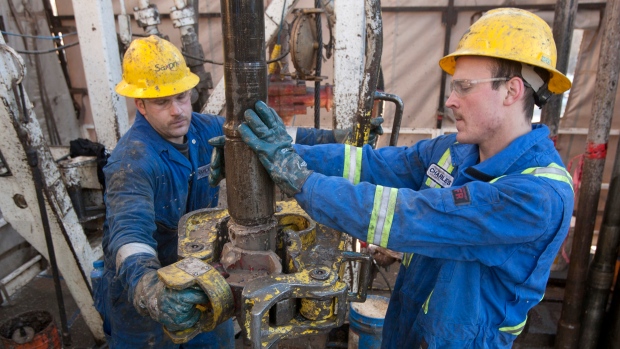Sep 20, 2018
Canada shale drillers feel Permian pain as prices collapse
, Bloomberg News

The Permian Basin isn’t the only oil field facing pressure from pipeline bottlenecks.
While global oil prices have climbed almost 20 per cent this year, producers in Alberta and British Columbia’s shale formations are seeing just the opposite, stymied by a lack of sufficient infrastructure to bring their light oil to market.
As Canada pushes for more pipelines to move its oil-sands output, two existing conduits that ship from shale are so full that space is being rationed. That leaves producers like Encana Corp., and Seven Generations Energy Ltd. facing regional oil prices at the lowest level in more than four years. This comes after rising oil prices earlier this year encouraged them to ramp up production, leading to a surge of condensate and oil.
“Individually, if the prices are there, the incentive is to drill,” Kevin Birn, a director on the North American crude oil markets team at IHS Markit, said in a phone interview. “But the collective impact appears to be that they may have overrun the market.”
Until recently, Canada’s shale drillers had largely escaped the oil-sands pipeline bottlenecks that sent heavy crudes to the weakest level since 2013.
A silver lining is that the low cost for condensate, one of the types of light oil produced in Canada’s shale, is providing some benefit to oil sands producers like Suncor Energy Inc. and Cenovus Energy Inc., who use it as a diluent to move heavy oil sands crude out of the region. Condensate can make up about a third of every barrel of bitumen crude that’s shipped out via pipeline or rail.
“It’s a meaningful impact on their cashflows, but they are still dealing with the wide differentials,” Mark Oberstoetter, lead analyst for upstream research at Wood Mackenzie Ltd. in Calgary, said by phone. “That helps a little bit.”
So far, drillers see the lower prices as temporary, Tom Whalen, Chief Executive Officer of the trade group Petroleum Services Association of Canada, said in a phone interview.
Last year, Chevron Corp., which owns the most drilling rights in the area, announced plans to develop about 55,000 acres (22,000 hectares) of land in the Duvernay. The company is continuing with those plans and has two rigs operating in the area, spokeswoman Veronica Flores-Paniagua said in an email Monday.
“No decisions have been taken on future development of other areas within Chevron’s lease holdings,” she said
The oil sands have made Western Canada a half-million barrel a day market for the condensate needed to dilute bitumen, Birn said. But imports from the U.S. surged to the highest in two years in June, according to U.S. Energy Department data.
The idea that domestic production might suddenly “overtake” imports wasn’t “on the radar” in the past, Birn said. “If it’s a battle for market share, it’s going to come down to U.S. imports being pulled back.”
Because crude futures are trading around US$70 a barrel, Canadian light oil drillers are still making money even with the wide discount, Wood Mackenzie’s Oberstoetter said.
“The stuff that’s getting drilled today is still in the money but you are a bit disgruntled,” he said. “You see other players in other parts of the world getting more.”


